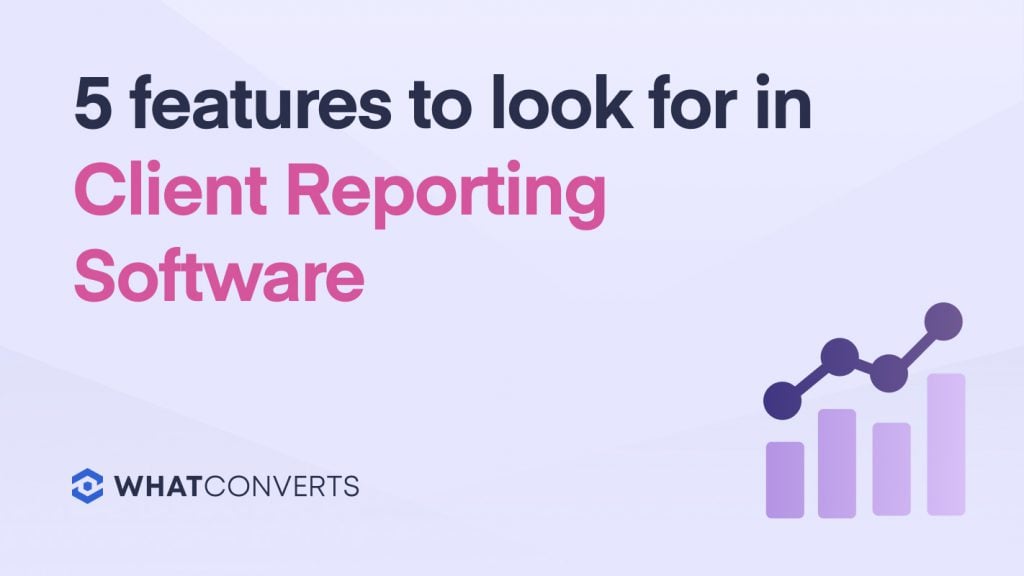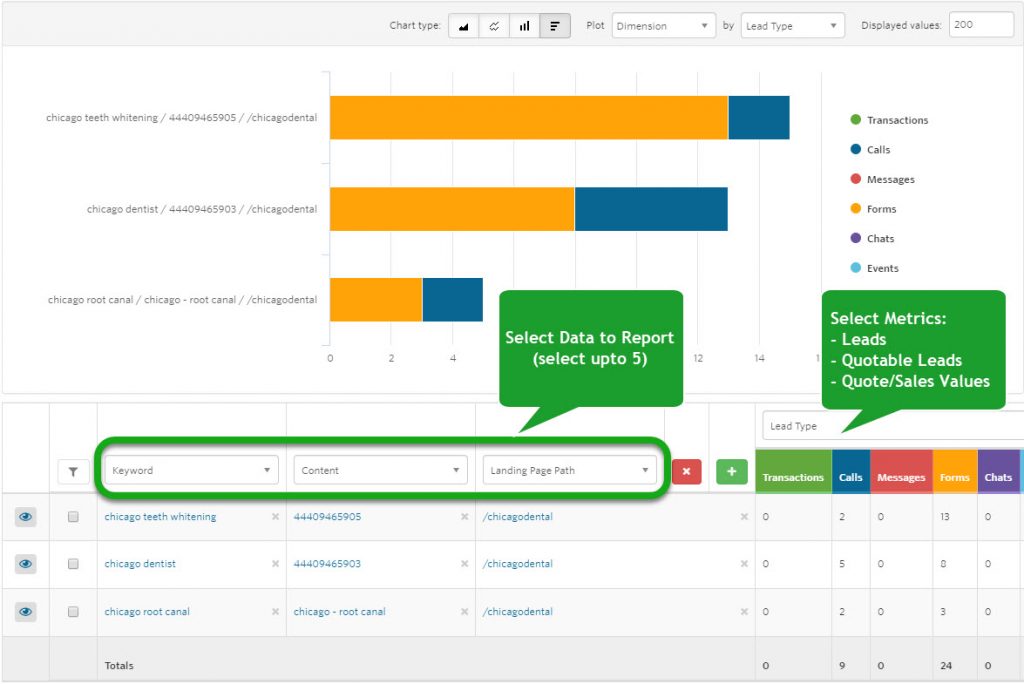
It’s time for a change. You’re shopping around for reporting software because you're tired of creating client reports with Excel. It’s a big step for your agency, and you don’t want to make the wrong choice.
Here’s a tip: there are five key features that every reporting tool must have. If your reporting tool checks all these boxes, you can rest assured knowing your reports will be a major plus for your agency in the eyes of clients. Happy clients usually stick around, and retaining clients costs about 4x less than finding new ones.
Here are the five features you should look for in a client reporting tool for your marketing agency.
Feature 1. It makes other software redundant.
When you implement a new client reporting tool, it should mark the end of you paying for other marketing technology. Get a tool that does it all. Multi-functional reporting software can save you from having to switch between windows, log into multiple accounts, and pay different bills at the end of every month.
Your reporting tool should help you save money by making other software superfulous, whether it be lead tracking tools, lead management tools, or lead value tools.
With the right reporting tool, you can capture every lead your agency earned, automatically add those leads to an organized database and then pull custom reports for clients.
If your reporting software can do all that, you can stop paying for other lead tracking and lead management software.
Feature 2. It can be white-labeled.
This should be a given, but your reporting tool must allow for whitelabeling. As an agency, you want clients to appreciate your reporting capabilities. When clients see value in your agency’s reporting, that’s one more reason for them to stick around long-term.
By whitelabeling your reporting sofrware, you give clients the impression that only your agency is capable of producing their high quality reports. If clients see a different company’s logo on their reports, they might skip the middleman (your agency) and get reports directly from the reporting tool company.
Feature 3. It can generate reports tailored to any business.
With clients, one-size does not fit all. One client might be obsessed with conversion rates while another might insist on seeing quote value for every lead. Some clients only care about ROI; others only care about how their marketing performance is improving over time.
If you’re going to invest in a reporting tool that will serve all your clients, you need a tool that offers endless customization. Here’s an example:
Introducing the WhatConverts Report Builder
The WhatConverts Report Builder allows agencies to create just about any kind of report based on the data in the client’s WhatConverts account.
For instance, if you want to see a lead report on the most effective combination of Keyword + Ad + Landing Page, all you have to do is select those dimensions from the drop down menu. Instantly, you’ll have a report that displays all the leads that came from the above combination of marketing variables.
Here's an example of what that custom report might look like for a dental office in chicago.
Once you have that report, you can filter by qualified and unqualified leads, sort by lead value or add even more dimensions like Source + Campaign to further define your most effective marketing.
Create reports based on the metrics that affect the bottom line:
- Lead Types – shows the number of total leads by conversion type.
- Qualified– shows the number of quotable leads.
- Quote Value – sums up quote value added to leads. (see example below)
- Sales Value – sums up sales value added to leads.
WhatConverts also integrates with AgencyAnalytics, so any combination of metrics you think of can be turned into beautiful reports, charts and tables.
Feature 4: It should show the right amount of information.
What’s the right amount of information for a client report? As Goldilocks might say, it’s not too much and it’s not too little; it’s just right.
It would be nice if every client knew exactly how marketing works, but that’s not the case. Some understand the connection between Google Ad impressions and revenue, while some are novices in the marketing world and need a little help figuring out how marketing affects their bottom line.
One thing every client understands is that leads are fuel for sales. That’s easy, which is why your reports should show how your marketing drives new leads for your client.
For many clients, the only reporting metrics that matter are the ones that directly connect marketing to sales. However, it’s not enough for your reports to just show raw lead numbers. Your agency must prove that your leads are qualified; that you’re not delivering junk leads that will never actually result in sales.
To prove this, you need the details behind each lead. It’s not enough to show that someone started a live chat or filled out a form; you need to know who they are, where they came from, what they wanted and how they got in touch. Those lead details make all the difference.
So, what’s the right amount of information? It looks like this: Don’t show too many metrics; focus on leads. At the same time, show detailed information about those leads; enough to prove that the leads are real and worthwhile.
Feature 5. Your reporting software should be automatic.
The wrong reporting tool will cost your team more time than it saves. Reporting can be a time-consuming endeavor for agencies for two reasons;
- The time it takes to create the reports
- The actual reporting meeting with the client
Your agency shouldn’t have to compile and organize data; the reporting tool should do it for you. Find a reporting tool that makes it easy to sort, filter and auto-organize leads however you see fit. When your reporting tool has all the lead data and all the filters you need, creating the report is simply a matter of clicking a button.
That takes care of the first reason that reporting takes so much time. The second problem, reporting meetings, can also be solved by a strong reporting tool. Your reporting tool should produce clear reports that stand up to scrutiny. The more clearly your reports show how well your marketing is driving leads, the less time you’ll spend explaining various metrics to clients. If your clients do want to dig into the reports to make sure the leads are qualified, your reporting tool must give you the the answers to their questions.
Lead reports — backed by detailed lead data — can withstand client scrutiny. These reports connect marketing to sales so your team can get in and out of reporting meetings quickly and get back to creating the marketing campaigns clients pay for.
Many reporting tools check some of these boxes, but one reporting tool checks them all — and was designed to help agencies prove their value to clients.
Find out how WhatConverts helps agencies retain clients and build better reports.
Get a FREE presentation of WhatConverts
One of our marketing experts will give you a full presentation of how WhatConverts can help you grow your business.
Schedule a Demo
Grow your business with WhatConverts






